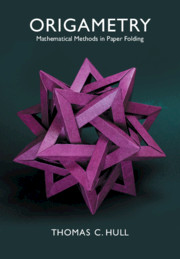Book contents
- Frontmatter
- Dedication
- Contents
- Introduction
- Part I Geometric Constructions
- Part II The Combinatorial Geometry of Flat Origami
- Part III Algebra, Topology, and Analysis in Origami
- 9 Origami Homomorphisms
- 10 Folding Manifolds
- 11 An Analytic Approach to Isometric Foldings
- Part IV Non-flat Folding
- References
- Index
11 - An Analytic Approach to Isometric Foldings
from Part III - Algebra, Topology, and Analysis in Origami
Published online by Cambridge University Press: 06 October 2020
- Frontmatter
- Dedication
- Contents
- Introduction
- Part I Geometric Constructions
- Part II The Combinatorial Geometry of Flat Origami
- Part III Algebra, Topology, and Analysis in Origami
- 9 Origami Homomorphisms
- 10 Folding Manifolds
- 11 An Analytic Approach to Isometric Foldings
- Part IV Non-flat Folding
- References
- Index
Summary
In this chapter, tools from analysis are brought to bear on flat foldings of high-dimensional Euclidean space. The exposition follows the work of Dacorogna, Marcellini, and Paolini from 2008, who discovered that high-dimensional flat folding maps, which they call rigid maps, can be solutions to certain Dirichlet partial differential equations. This approach offers a different proof of the Recovery Theorem from Lawrence and Spingarn (1989), and the folding maps that result from Dirichlet problems can sometimes have crease patterns that exhibit interesting self-similarity.
Keywords
- Type
- Chapter
- Information
- OrigametryMathematical Methods in Paper Folding, pp. 217 - 228Publisher: Cambridge University PressPrint publication year: 2020

